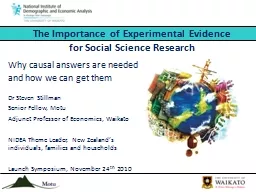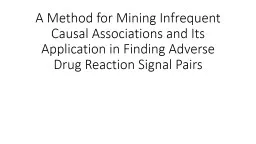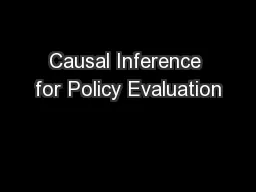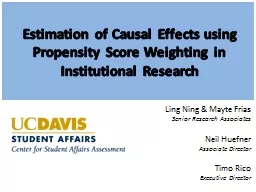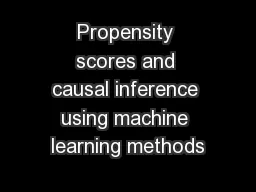PPT-Why causal answers are needed and how we can get them
Author : calandra-battersby | Published Date : 2017-09-11
Dr Steven Stillman Senior Fellow Motu Adjunct Professor of Economics Waikato NIDEA Theme Leader New Zealands individuals families and households Launch Symposium
Presentation Embed Code
Download Presentation
Download Presentation The PPT/PDF document "Why causal answers are needed and how we..." is the property of its rightful owner. Permission is granted to download and print the materials on this website for personal, non-commercial use only, and to display it on your personal computer provided you do not modify the materials and that you retain all copyright notices contained in the materials. By downloading content from our website, you accept the terms of this agreement.
Why causal answers are needed and how we can get them: Transcript
Download Rules Of Document
"Why causal answers are needed and how we can get them"The content belongs to its owner. You may download and print it for personal use, without modification, and keep all copyright notices. By downloading, you agree to these terms.
Related Documents

